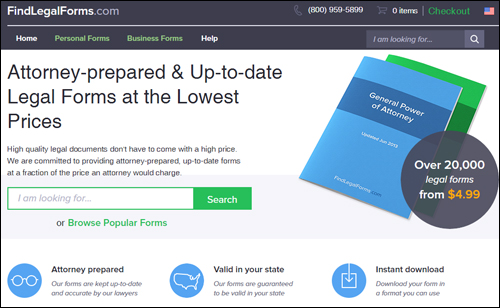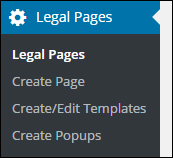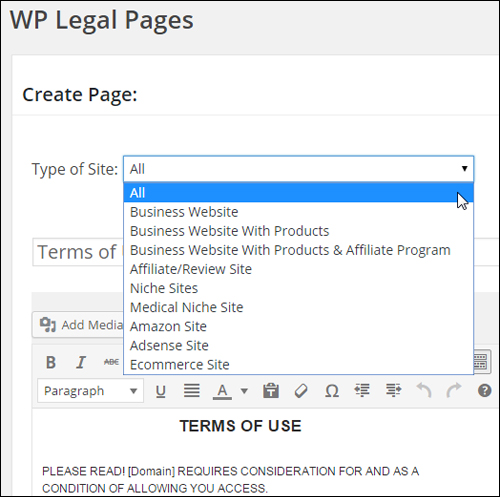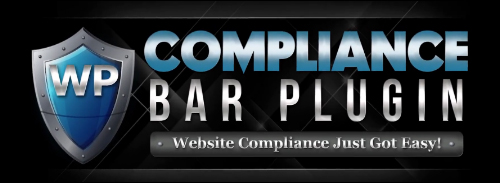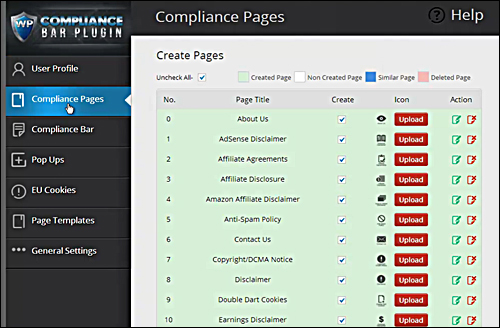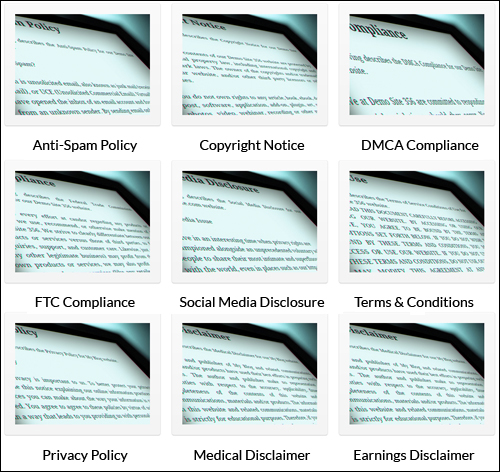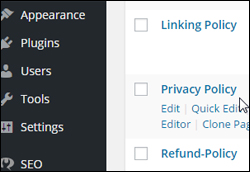
If you do any kind of business online, you do not want to learn the hard way that you have broken the law.
As the digital way of life continues to grow at breakneck speed and the rules of the game keep changing, it’s absolutely essential that you stay informed about what’s going on and ensure that your website or blog remains legally compliant, especially if having an online presence is important in the success of your overall business strategy.
New laws introduced in 2014 regulating how businesses promote advertising on their sites state that if you promote anything on your website for commercial gain, you need to follow certain disclosure guidelines to prevent enforceable orders being issued against you by regulatory agencies, such as the Better Business Bureau, also referred to as the BBB. Search online “The Online Interest-Based Advertising Accountability Program,” which regulates behavioral advertising across the internet for more details.

(Better Business Bureau)
The new laws affect several online business activities, including:
- Any form of advertising, e.g. contextual advertising
- Retarget Marketing
- Google Analytics (or other analytics software)
- Affiliate Marketing
- Product Creation
- Blogging
- etc.
If there are no legal pages on your website (e.g. terms and conditions of use, privacy statement, earning disclaimers, etc.), many sites like Google won’t let you advertise, online merchants like ClickBank or JVZoo won’t allow you to sell digital products, PayPal may suspend your account, Facebook will suspend your applications, and you won’t be allowed to participate in a number of advertising or online marketing networks.
Plus, you could also be inadvertently leaving yourself open and vulnerable to expensive litigation.
The purpose of this article is to make you aware that your website(s) are subject to legal requirements, the importance of complying with the terms of service of external providers whose products or services you may be using on your website, and that there are solutions that can help your sites become more compliant, such as the tools that we discuss further below.

Is Your Site Compliant?
![]()
Legal Disclaimer: Please note that we are not lawyers and we do not provide legal advice in this article. Do your own due diligence and consult legal experts about the best way to ensure that your website is compliant with all laws and regulations concerning your specific business.
Why Having A Compliant Website Is Important
Consider what would happen to your business in the following scenarios:
- A person has a cardiac arrest after they use your online fitness workout.
- The skin cream you sell as an affiliate gives people allergic reactions.
- Your opt-in list provides a statement informing prospective subscribers that you won’t sell their information, but you have not clearly informed them what you plan to do with the information you have collected.
- Someone steals content from your website and puts it up on their site.
- There is no statement on your website letting your site visitors know that you’re an affiliate for the product you’re promoting that you could derive a sales commission if visitors end up buying via your affiliate link.
- You didn’t spell out the terms of your refund/return policies.
- Online visitors claim that your testimonials are false and decide to sue you.
- You haven’t disclosed that you were given a free copy of the product in your review.
- Your site publishes adult content and you haven’t taken appropriate measures to keep underage persons from accessing it.
Consider also the real examples of costly compliance breaches below:
- A CPA Marketer failed to provide adequate disclaimers telling visitors they would have to give up their personal information (including credit card details to complete an offer they were promoting. Cost = $390,000.
- A social networking app developer copped a massive $800,000 fine for collecting personal information from mobile device address books without the owners’ knowledge and consent – including storing children’s private details.
- Facebook’s Terms Of Service does not allow users to scrape UIDs. Many marketers gambled that they could get away with it and lost. Their accounts were shut down, resulting thousands of dollars in lost revenue.
- An independently-conducted study by Brad Geddes of SearchEngineLand, showed that, of a couple of hundred websites chosen at random, more than 90% were breaking at least one of Google’s policies, more than 65% had breached at least 2 of Google’s policies, and more than 40% had infringed at least three of Google’s policies. Although the website owners could technically be sued by Google, more than likely what could happen, is that they would be issued cautions or lose access to the Google program whose policies with the violation, which could result in loss of income (e.g. AdSense or AdWords).
Can you see how you could become exposed to the risks of litigation through non-compliance?
Regardless of whether you are a:
- CPC (Cost Per Conversion) Marketer
- Network Marketer
- Affiliate Promoter
- AdSense Publisher
- Product Publisher
- Amazon Associate
- e-Commerce Store Owner
- Publisher Of Adult Content
- Provider Of Freelance, Coaching Or Consulting Services
- Online Seller Of Any Service Or Product
it’s important to do whatever is necessary to make sure that your online business stays legally compliant.
Compliance With 3rd-Party Services - ToS, Policies, etc.
All the big companies and government regulatory agencies emphasize the importance of observing the terms and policies of service providers.
You must let your site visitors know that your business complies will all legal requirements and professional guidelines. This not only improves consumer trust and confidence in your business, it’s also required by most companies you will interact with online.
For example:
Google requires websites to display certain information when using their services and product features. This includes Google Analytics …
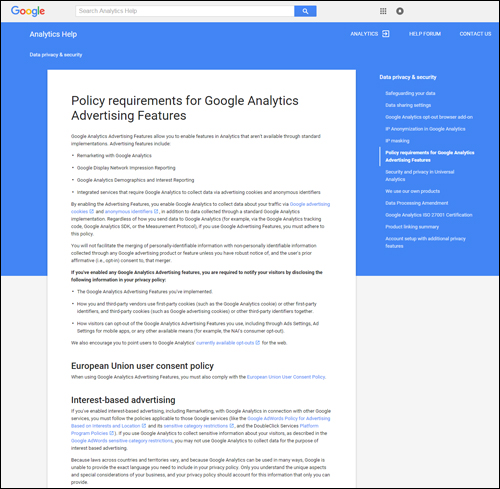
(Google Analytics – Policy Requirements)
Monetizing your site with Google AdSense …
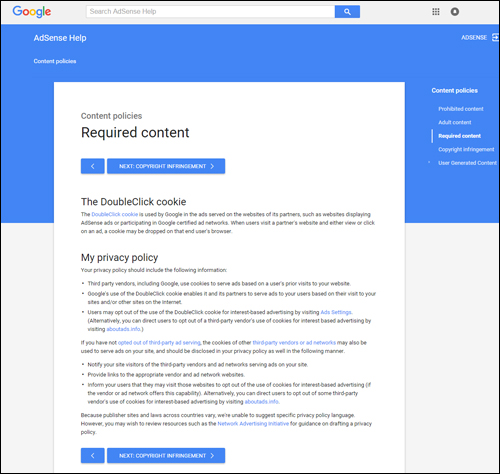
(Google AdSense online advertising policy requirements)
Or promoting your services or products via Google AdWords …
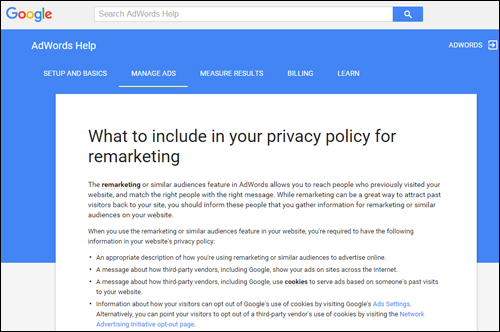
(Policy requirements for using Google AdWords)
If you sell information products with places like ClickBank, JVZoo, or other established online merchant sites, you will need to add legal pages before your products can be approved for sale in their networks …
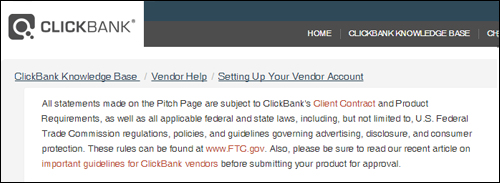
(Policy requirements for using ClickBank)
The Federal Trade Commission (FTC) also requires you to add clear disclaimers and disclosures to visitors, especially when concerning the use of testimonials or product endorsements …

(Federal Trade Commission – consumer policies and regulations)
FTC Regulations – Ensuring That Your Site Is Compliant
FTC regulations governing the conduct of businesses online were introduced in March 2012. Search online and you will see that many sites are unaware (or choose to ignore) these requirements. As has already been the case, this often prompts the FTC to make an example of businesses and prosecute companies in an effort to get other businesses to comply.
If you plan to do any kind of money-making activity online, therefore, it’s best not to take any chances. Even if your business is not physically located in the U.S. you should protect your business interests by ensuring that your site is compliant with FTC regulations and guidelines.
Many online resources provide guidelines for structuring disclaimers and disclosures to help your business comply with FTC requirements. See the references and resources section at the end of this article for more information …
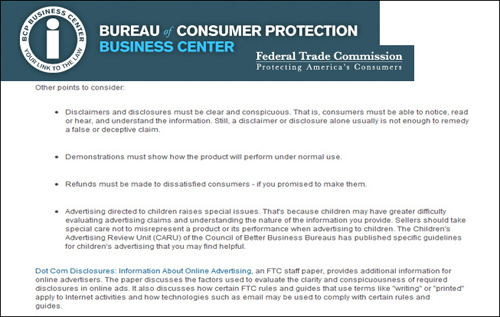
(Wording your disclaimers and disclosures correctly is important to avoid running foul of laws and regulations)
Social Media Apps Also Require Compliance
If you are planning to develop applications for your site, you will also be required to provide sites like Twitter, Facebook, and others with information about various legal pages …
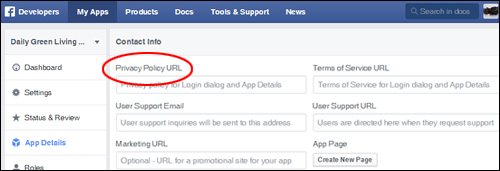
(Facebook apps also require compliance)
![]()
- If you are unsure whether or not you may be breaking the law, and/or Terms of Service policies and guidelines of companies like Google, Facebook, etc., it’s best to assume that you most probably are.
- If you are considering promoting anything on your site as an affiliate marketer, or generate revenue online with Google AdSense, Amazon, or eBay ads, or use Google AdWords pay-per-click ads to drive visitors to your pages, etc., then find out exactly what kind of legal information you are required to display on your site to comply with all Terms Of Service and policy requirements to avoid having your accounts suspended.
- If you’ve been wondering whether “borrowing” a Copyright Notice is Copyright infringement, then it’s best to act now and take proper precautions to avoid becoming a magnet for litigation.
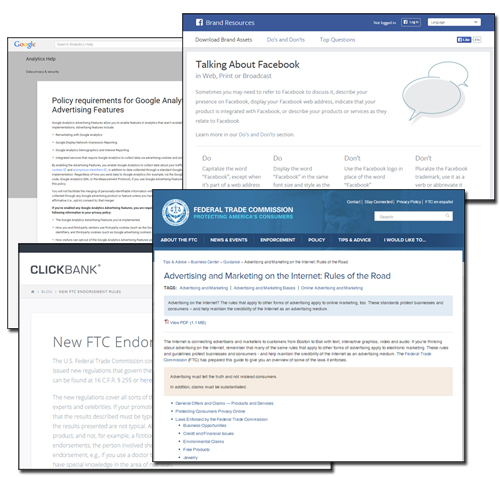
(In addition to legal and regulatory compliance, most third-party websites require you to comply with their terms of use)
What Compliance Information Pages Do I Need To Add To My Site To Be Insured Against Legal Compliance Issues?
If you suspect that your web site is lacking in terms of compliance, then you will find this section helpful.
Adding the following compliance pages to your website should help keep you out of trouble with many regulatory agencies and external providers, and avoid possible legal issues or even threats of legal action (e.g. “take down” notices):
- About Us
- Contact Page
- Privacy Policy
- Terms And Conditions
- Disclaimer Pages
- General Data Protection Regulation (GDPR) Compliance
As well as the above, you may want to look into implementing any of the pages listed below if applicable:
- Affiliate Disclosure (e.g. if you promote or sell affiliate products or services)
- Anti-Spam Policy
- Compensation Disclosure
- External Linking Policy
- Health Disclaimers (e.g. if your website provides general advice about health or medical areas)
- Refund Policy (if you sell products or services online)
- Use Of Media (if you provide users with access to download videos or audio files on your site)
Disclosure Pages – Types
Adding the right disclosure information to your site is important. For example:
- No Material Connection – Lets users be aware that you will not receive for writing the article.
- Affiliate Links – Lets your readers be aware that you may benefit financially if they act on your recommendation and buy through one of your affiliate links.
- Sample/Review Copy – Disclosure that informs readers that you have received a review or sample copy of the product or service you’re reviewing or writing about.
- Sponsored Post – Lets readers be aware that you were compensated in some way to write the post.
- Third Party Advertising – Informs readers that you’re using online behavioral tracking technology. This is required to comply with the “enhanced notice” the Better Business Bureau has been requiring online publishers to show prominently on their sites since January 1, 2014.
Adding Legal Content To Your WordPress Site
Ideally, you should have your lawyer prepare the content of your legal documents. Once you have this completed, there are several ways to add them to your website.
Upload Legal Pages Manually
If someone prepares and delivers the legal verbiage for you as standard web pages (e.g. HTML), you can simply upload these to your site, or have someone upload them for you.
We recommend creating a legal directory on your web server and uploading your legal pages to this directory (e.g. via FTP) …
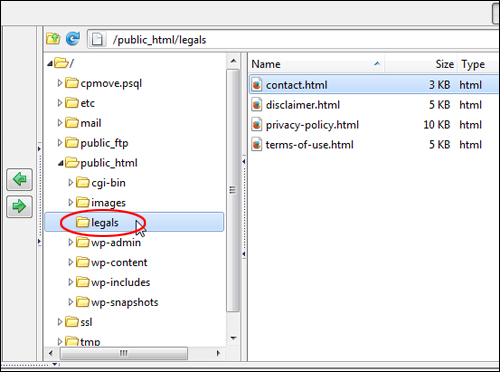
(Create a ‘legals’ folder in your server and upload pages via FTP)
You can then easily add a link to these legal pages from your WordPress site using custom links in your menu feature …
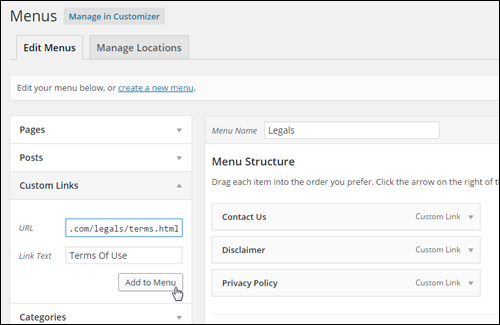
(WordPress Menu)
Displaying Legal Pages On Your Website
After uploading your legal pages, make sure that these are up-to-date and display clearly to visitors. You can insert links to your legal pages into the WordPress sidebar (or place them in the footer section of your website or blog) to ensure that visitors have access to the information from all your pages …

(Display legal pages to users on all of your site’s pages)
We have written a detailed tutorial about displaying links to pages on your WP sidebar and footer using widgets here:
Ready-Made Legal Templates
You can find downloadable attorney-drafted internet forms and agreements by searching online, or by going to websites like this one:
Find Legal Forms
Go here for more info:
Alternatively, you can purchase a set of website legal templates drafted by attorney Scott Talbert to help businesses protect themselves online …
Cut & Paste Website Legal Pages
(Cut & Paste Website Legal Pages)
Cut & Paste website legal pages were written by an attorney and feature less passive voice and more plain language phrasing and can be customized with a quick search and replace to insert your own details, then pasted into your pages.
The legal templates included in Scott Talbert’s Website Legal Forms include:
- Anti-Spam Policy
- Copyright Notice
- Disclaimer
- DMCA Compliance
- FTC Compliance
- Privacy Policy: Google, DART, etc.
- ToS & Conditions of Use.
You can either create a new WordPress page for each legal form you want added to your website, then paste the content from the templates into your web pages and publish or upload the pages to your web server as described earlier.
For more details, go here:
Plugins – Legal Pages
In addition to using legal templates, you can simplify things using WordPress plugins.
Here are some great legal plugins for WordPress users you may be interested in checking out:
WordPress Legal Pages
(WordPress Legal Pages)
If the idea of setting up legal pages manually feels too time-consuming for you, then consider using a plugin like WP Legal Pages instead …
The WP Legal Pages plugin is not free, but it’s a low-priced and well-supported plugin that will help make the work of creating and implementing legal pages on your website much easier and save you a great deal of time.
Some of the reasons to consider using WordPress Legal Pages plugin are:
- Pre-written Templates – Includes over 20 built-in legal templates created by a team of professional lawyers.
- Very Quick And Easy To Use – You can set up most of the legal pages you need in around 3 minutes with a few clicks of the mouse.
- Fully Customizable Pages – The plugin includes fully customizable and easily editable legal form templates (e.g. Terms Of Service, Disclaimer, Earnings Disclaimer, Privacy Policy and more!)
- Editable Pages – WordPress content editor lets you edit legal pages just like every other page on your site.
- Custom Shortcodes Integration – Add shortcodes to your WordPress pages and the information will be automatically inserted into your pages when you publish.
- Exclude pages. The plugin lets you exclude pages from menus with a simple check box and delete and manage these like any other page on your website.
- Forced Options – Force page or post lockdown. When a user agrees to your terms, the page unlocks, giving them access.
- New Features – The plugin is updated with new features when new versions are released.
After installing WordPress Legal Pages, a menu item will display inside your main dashboard menu section …
(WP Legal Pages Plugin For WordPress – Legal Pages Menu)
This allows you to create, edit and view your legal pages from the admin area …
(WordPress Legal Pages Plugin For WordPress – Settings Area)
The plugin gives you the option to create legal pages for different online uses, such as business websites with products, review websites, Amazon sites, etc …
(WordPress Legal Pages Plugin For WordPress – Page type menu)
Choose from various pre-written legal templates …

(WP Legal Pages Plugin – Legal Templates)
Legal page templates include:
- Terms of Use (Users are forced to agree to Terms and Conditions before using site)
- Linking Policy
- External Links Policy
- Terms and Conditions
- Refund Policy
- Affiliate Disclosure
- Privacy Policy
- Affiliate Agreement
- Facebook Privacy Policy
- Earnings Disclaimer
- Antispam Policy
- DoubleClick DART Cookies Policy
- Disclaimer Template
- FTC Disclosure Statement Template
- Medical Disclaimer Template
- Testimonials Disclosure – As per FTC guidelines
- Amazon Affiliate Disclosure Template
- DMCA Policy Template
- California Privacy Rights Policy Template
- Digital Goods Refund Policy Template
- COPPA – Children’s Online Privacy Policy Template
- Blog Comments Policy Template
- Newsletter Subscription Policy and Disclaimer Template
- FTC Disclaimer Widget
Go here to learn more about the benefits of using this powerful plugin:
Compliance Bar – WP Compliance Plugin
Compliance Bar is a complete compliance & disclaimer solution for your online business …
Go here to learn more:
Legal Suite Pro
(Legal Suite Pro For WordPress)
This plugin lets you easily install professionally-written legal pages such as:
- Anti-Spam Policy
- Copyright Notice
- DMCA Compliance
- FTC Compliance
- Privacy Policy
- Social Media Disclosure
- Medical Disclaimer
- Terms of Use
- Earnings Disclaimer
(Legal Suite Pro Plugin – Professionally-written legal forms)
Additionally:
- Drag & Drop FTC Disclaimer Widget: Add an FTC Disclaimer to any WordPress sidebar or widget area.
- Customizable EU Cookie Compliance Bar: Display an EU cookie compliance bar if you are getting traffic from the EU and your sites use cookies.
With just one-click you can install almost all of the legal pages your site needs and these professionally written legal pages can be created in your theme and/or as a standalone page outside of your theme.
The plugin developers secured rights to high quality, professionally written legal disclaimers and packaged them into a plugin that can be installed quickly on any WordPress powered site. You can have legal pages installed and set up on your site in one minute or less and the plugin licensing is very flexible, allowing you to install and use the plugin on all of your websites (even sites that you decide to sell or flip).
For more information, go here:
![]()
If hiring a lawyer to create your online legal documentation is out of your budget, consider implementing at least some basic form of legal protection on your site until you can afford a lawyer.
We want your business to be legally safe!
Download the Legal Pages Generator software below (for FREE!), or choose one of the better solutions we discuss in this article, such as using ready-made legal forms, or a legal pages plugin - see section below.

(Legal Pages Generator)
Legal Pages Generator allows you to quickly generate essential legal documents for your website including ToS, Privacy Statement, Copyright Notice, Website Disclaimer and optional Earnings Disclaimer.
***
As we’ve previously pointed out, if you engage in any form of business online (or are planning to), it’s important that your website stays compliant with regulatory agencies and any terms of service (TOS) and guidelines of third-party sites that you may decide to promote or advertise online. If your website isn’t compliant with laws designed to protect consumer rights, you’re breaking the law.
Being non-compliant puts you at risk of suffering both financial losses and the loss of your reputation. Why risk your money and reputation, when you can protect yourself so inexpensively?
![]()
Legal Disclaimer: Once again, please note that we are not lawyers and we offer no legal advice in this article. You must do your own due diligence and consult legal experts about the best way to ensure that your website fully complies with all legal requirements regarding your specific business.
References And Resources
Here is a time-saving list of additional sites we recommend you visit to help you better understand what your website may require to stay compliant and meet legal requirements and guidelines:
- FTC Latest List Of Rules & Regulations
- Federal Trade Commission Advertising & Marketing Rules Of the Road
- FTC Advertising And Marketing On The Internet
- Online Interest-Based Advertising Accountability Program – BBB
- Dot Com Disclosures: Information About Online Advertising
- Restore Online Shoppers’ Confidence Act
- CAN-SPAM Act Guide
- Children’s Online Privacy Protection Rule
- FTC Regulatory Review Web Page
- FTC Rules and Guides Currently Under Review
- The Department of Commerce Internet Policy Task Force – Commercial Data Privacy and Innovation in the Internet Economy: A Dynamic Policy Framework
- FTC Staff Report: Self-Regulatory Principles for Online Behavioral Advertising
- FTC Final Guides Governing Endorsements and Testimonials
- US Patent and Trademark Office
- US Copyright Office
Plus …
- Analytics Help – Policy requirements for Google Analytics Advertising Features
- Google AdSense Program Policies Explained
- AdSense Help – Required Content
- Google AdWords – Information Collection And Use
- AdWords Help – What to include in your privacy policy for remarketing
- ClickBank – Creating Your First Product
- Facebook Platform Policies
We hope you have found this article useful and that it has helped you understand the importance of having a legally compliant website. Use the information provided above to quickly add essential legal pages to your WordPress site using inexpensive solutions.
***
"Your training is the best in the world! It is simple, yet detailed, direct, understandable, memorable, and complete." Andrea Adams, FinancialJourney.org

